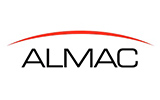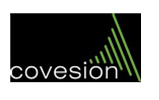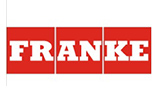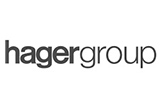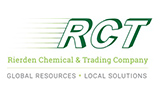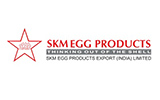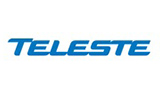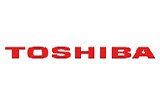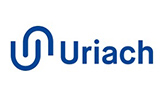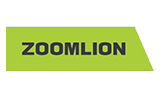Chapter 1. Executive Summary
1.1. Market Snapshot
1.2. Global & Segmental Market Estimates & Forecasts, 2017-2026 (USD Billion)
1.2.1. Wireless Temperature Sensor Market, by Region, 2017-2026 (USD Billion)
1.2.2. Wireless Temperature Sensor Market, by Type, 2017-2026 (USD Billion)
1.2.3. Wireless Temperature Sensor Market, by Application, 2017-2026 (USD Billion)
1.3. Key Trends
1.4. Estimation Methodology
1.5. Research Assumption
Chapter 2. Global Wireless Temperature Sensor Market Definition and Scope
2.1. Objective of the Study
2.2. Market Definition & Scope
2.2.1. Scope of the Study
2.2.2. Industry Evolution
2.3. Years Considered for the Study
2.4. Currency Conversion Rates
Chapter 3. Global Wireless Temperature Sensor Market Dynamics
3.1. Wireless Temperature Sensor Market Impact Analysis (2018-2026)
3.1.1. Market Drivers
3.1.2. Market Challenges
3.1.3. Market Opportunities
Chapter 4. Global Wireless Temperature Sensor Market Industry Analysis
4.1. Porter's 5 Force Model
4.1.1. Bargaining Power of Suppliers
4.1.2. Bargaining Power of Buyers
4.1.3. Threat of New Entrants
4.1.4. Threat of Substitutes
4.1.5. Competitive Rivalry
4.1.6. Futuristic Approach to Porter's 5 Force Model (2016-2026)
4.2. PEST Analysis
4.2.1. Political
4.2.2. Economical
4.2.3. Social
4.2.4. Technological
4.3. Investment Adoption Model
4.4. Analyst Recommendation & Conclusion
Chapter 5. Global Wireless Temperature Sensor Market, by Type
5.1. Market Snapshot
5.2. Global Wireless Temperature Sensor Market by Type, Performance - Potential Analysis
5.3. Global Wireless Temperature Sensor Market Estimates & Forecasts by Type 2016-2026 (USD Billion)
5.4. Wireless Temperature Sensor Market, Sub Segment Analysis
5.4.1. ZigBee
5.4.2. Wi-Fi
5.4.3. IPv6
5.4.4. Bluetooth
5.4.5. Others
Chapter 6. Global Wireless Temperature Sensor Market, by Application
6.1. Market Snapshot
6.2. Global Wireless Temperature Sensor Market by Application, Performance - Potential Analysis
6.3. Global Wireless Temperature Sensor Market Estimates & Forecasts by Application 2016-2026 (USD Billion)
6.4. Wireless Temperature Sensor Market, Sub Segment Analysis
6.4.1. Military and Security
6.4.2. Medical
6.4.3. Automotive
6.4.4. Industrial Monitoring
6.4.5. Building Automation
6.4.6. Others
Chapter 7. Global Wireless Temperature Sensor Market, Regional Analysis
7.1. Wireless Temperature Sensor Market, Regional Market Snapshot
7.2. North America Wireless Temperature Sensor Market
7.2.1. U.S. Wireless Temperature Sensor Market
7.2.1.1. Type breakdown estimates & forecasts, 2016-2026
7.2.1.2. Application breakdown estimates & forecasts, 2016-2026
7.2.2. Canada Wireless Temperature Sensor Market
7.3. Europe Wireless Temperature Sensor Market Snapshot
7.3.1. U.K. Wireless Temperature Sensor Market
7.3.2. Germany Wireless Temperature Sensor Market
7.3.3. Rest of Europe Wireless Temperature Sensor Market
7.4. Asia-Pacific Wireless Temperature Sensor Market Snapshot
7.4.1. China Wireless Temperature Sensor Market
7.4.2. India Wireless Temperature Sensor Market
7.4.3. Japan Wireless Temperature Sensor Market
7.4.4. Rest of Asia Pacific Wireless Temperature Sensor Market
7.5. Latin America Wireless Temperature Sensor Market Snapshot
7.5.1. Brazil Wireless Temperature Sensor Market
7.5.2. Mexico Wireless Temperature Sensor Market
7.6. Rest of The World Wireless Temperature Sensor Market
Chapter 8. Competitive Intelligence
8.1. Top Market Strategies
8.2. Company Profiles
8.2.1. Texas Instruments Incorporated
8.2.1.1. Key Information
8.2.1.2. Overview
8.2.1.3. Financial (Subject to Data Availability)
8.2.1.4. Product Summary
8.2.1.5. Recent Developments
8.2.2. Analog Devices Inc.
8.2.3. Schneider Electric SE
8.2.4. General Electric Company
8.2.5. Yokogawa Electric Corporation
8.2.6. NXP Semiconductors NV
8.2.7. Microchip Technology Inc.
8.2.8. Honeywell International Inc.
8.2.9. Siemens AG
8.2.10. ABB Ltd
8.2.11. Emerson Electric Co.
Chapter 9. Research Derivatives
9.1. Research Derivatives
9.1.1. Data Mining
9.1.2. Analysis
9.1.3. Market Estimation
9.1.4. Validation
9.1.5. Publishing
9.2. Research Attributes
9.3. Research Assumption

